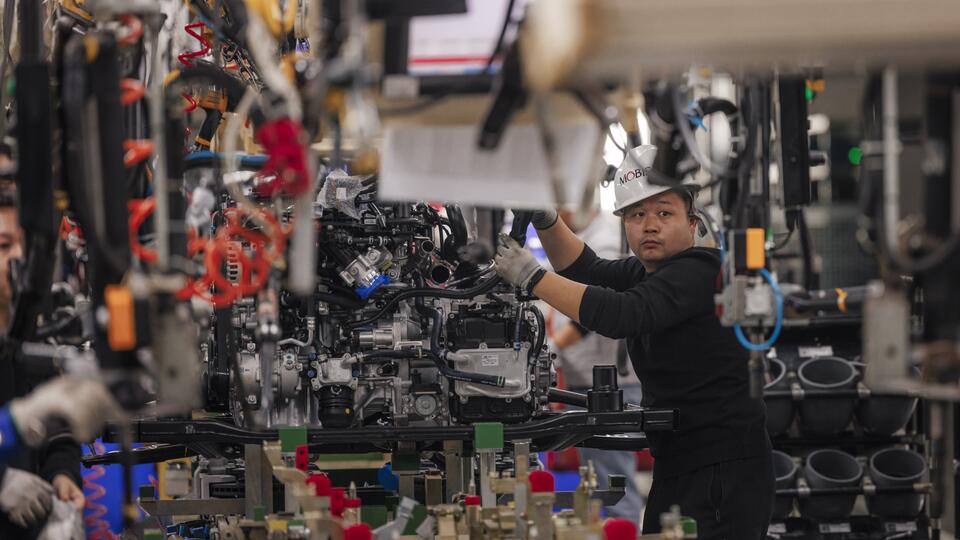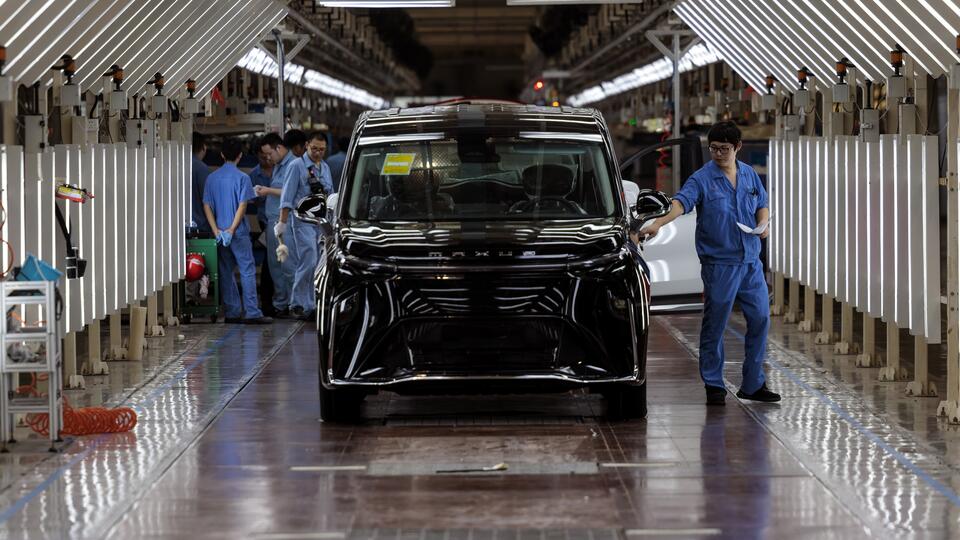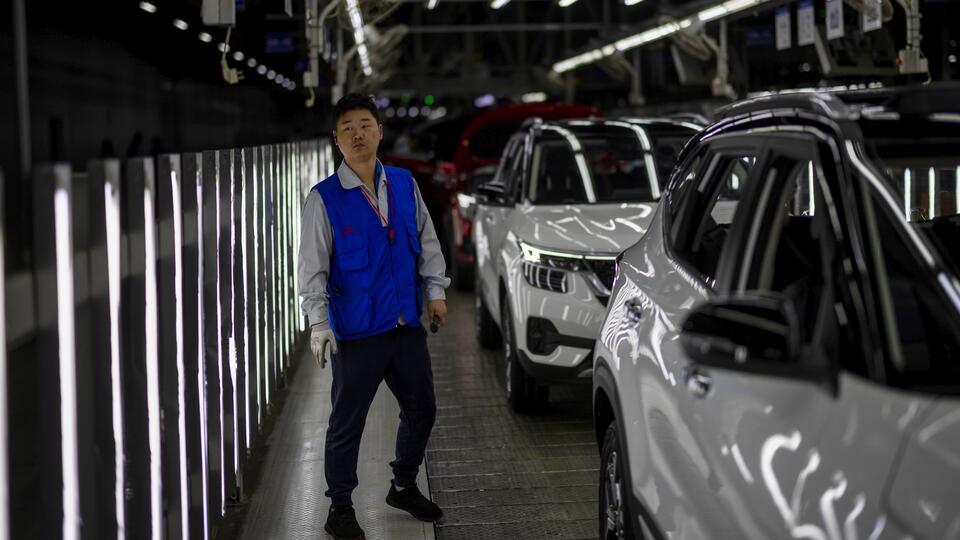Photo: © EPA/ALEX PLAVEVSKI/TASS
In Russia at a record pace open new showrooms of Chinese brands. Since the beginning of 2022, their number has increased by almost 300, and in the whole country there are already more than 900 showrooms.
What are the reasons for the unprecedented growth in the number of Chinese auto brands in the Russian market? And can the Celestial Empire become the largest car exporter in the world? We will tell in the material REN TV.
Unprecedented rise of auto brands from China
Our auto retailer has never seen such a rapid growth in the number of showrooms of brands from the Celestial Empire, experts at Otkritie Avto say.
“In Russia, almost at an emergency pace, a dealer network of China brands was formed from 936 showrooms. Almost 300 of them were opened this year, and 185 from July to November,” experts pointed out.
The Exeed brand was the leader in the number of new showrooms. Auto expert Sergey Burgazliev confirmed that the “galloping growth” in the number of Chinese cars in the Russian market occurred precisely in 2022.
“If we take data from April to October 2022, then in Russia the entire passenger car market was approximately 252,700 cars. Of these, 34% of the market are Russian brands, Chinese brands are in second place (22%). If we are talking about share of the market, in 2021 Russian brands for the same period occupied about 16% of the market, and Chinese – about 5%. However, in 2022, Russian brands occupy 34%, and the Chinese grew to almost 22%”, he said in conversation with REN TV.
An independent auto industry consultant explained that the “rise of Chinese brands” is due to the fact that other brands of foreign cars are simply not represented on the market.
“China will have to be taken seriously”
In August 2022, there were 1.5 times more dealers of Chinese car brands in Russia than sellers of cars of Russian brands. According to the Avtostat agency, at the beginning of October, every third car sold on our market was already from China, and further this share will only grow as dealers of European, Japanese and Korean brands run out of stock. It is clear that well-known events “helped” in this, but the export of Chinese cars is growing all over the world, and in the coming years they will have to be taken seriously.
In August and September 2022, Chinese car exports topped 300,000 for the first time. This is 60% and 74% higher than in the same months of 2021. Today, China is the second largest automotive exporter after Japan. In the first three quarters, 2.1 million new cars left China around the world.
And the most interesting point is that in 2020, the volume of Chinese exports amounted to only one million cars. And if the “adding a million a year” trend continues, the Celestial Empire could become the world’s largest car exporter by the end of 2023.

Lack of factories in other countries
Of course, this does not mean that right now there will be more Chinese cars on the roads than Japanese, German or Korean ones. We are talking only about export, while the bulk of the cars sold are produced at local factories. For example, even in today’s Russia, the share of imported cars is about a quarter of the total market. In August 2022, out of 41.7 thousand cars sold, about 10 thousand were imported from abroad. In addition, manufacturers from China still have few factories in other countries, like the Tula Haval or the Belarusian Geely: the bulk of Chinese cars are made directly in the Celestial Empire.
And yet there is a dynamic. Now, instead of British sports cars under the MG brand, Chinese cars and crossovers are being sold, but the world has accepted them perfectly: in the 8 years since the “reset”, export circulation has exceeded one million copies, and 310 thousand of them were sold in the last year alone. Moreover, 30,000 Chinese MGs were bought directly from the UK, the home of the brand.

A breakthrough in the production of electric vehicles
But this is just the tip of the iceberg. The Chinese concerns SAIC and BYD together produced almost 650,000 electric vehicles. This is more than Vokswagen (217,000), Hyundai/Kia (167,000) and Stellantis (136,000) combined. But in China there is still a huge number of smaller players, which together create a gigantic volume. Think about it: in the past August alone, half a million clean electric cars were bought in the Celestial Empire. Now the Chinese are beginning to seriously take on foreign markets.
Presentations of several companies that launch European sales took place at the Paris Motor Show taking place these days: BYD, Great Wall with Wey and Ora brands, Nio, XPeng, Hongqi and others are on the way. Prior to this, only BAIC / MG and the Swedish-Chinese Polestar from Geely and Volvo were actually presented in the Old World. Now the Chinese are not just making cars well, but are improving specifically in electric vehicles. The fruits of this work: modern, technological, stuffed to the eyeballs with gadgets and original chips. Perhaps Chinese electric cars are not yet ready to compete on equal terms with Tesla, but they are already overtaking the overslept electric breakthrough in Europe. And besides, they are cheaper.

What lies ahead for the Chinese car market?
The products of Chinese BAIC and Polestar already occupy 5.8% of the Old World electric car market, although just a year ago this figure was 3.8%. New powerful players are entering the business: mainly the BYD concern, which generally aims to become the world leader in the production of electric vehicles. It is quite possible that in a year the share of “Chinese” will already be in double digits, and we are talking only about Europe, and after all, expansion is starting right now in Australia, Japan, and the United States.
At the end of 2021, China occupied more than half of the global electric vehicle market with a result of 3.5 million units. At the same time, the share of electric vehicles in European sales by 2025 should be, according to various estimates, from 30 to 40% or 4-6 million units. And if about half of them are made in China, this will not be surprising.
Source: Ren.tv
John Holton is a seasoned author and journalist, known for his expertise in economics. He currently works as a writer at 24 news breaker, where he provides readers with in-depth analysis and commentary on the latest economic developments. With a background in finance and a talent for explaining complex economic concepts in a clear and accessible way, John’s writing is a must-read for anyone interested in staying informed about the economy.
